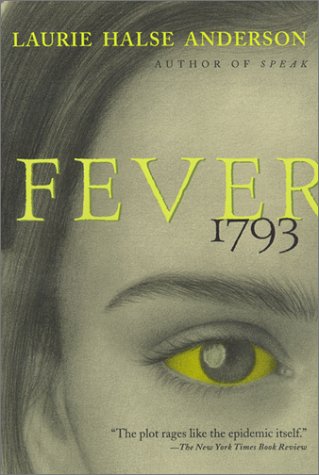
Anderson, Laurie. (2002) Fever 1793. Simon & Schuster Publishing
From Publishers WeeklyThe opening scene of Anderson's ambitious novel about the yellow fever epidemic that ravaged Philadelphia in the late 18th century shows a hint of the gallows humor and insight of her previous novel, Speak. Sixteen-year-old Matilda "Mattie" Cook awakens in the sweltering summer heat on August 16th, 1793, to her mother's command to rouse and with a mosquito buzzing in her ear. She shoos her cat from her mother's favorite quilt and thinks to herself, "I had just saved her precious quilt from disaster, but would she appreciate it? Of course not." Mattie's wit again shines through several chapters later during a visit to her wealthy neighbors' house, the Ogilvies. Having refused to let their serving girl, Eliza, coif her for the occasion, Mattie regrets it as soon as she lays eyes on the Ogilvie sisters, who wear matching bombazine gowns, curly hair piled high on their heads ("I should have let Eliza curl my hair. Dash it all"). But thereafter, Mattie's character development, as well as those of her grandfather and widowed mother, takes a back seat to the historical details of Philadelphia and environs. Extremely well researched, Anderson's novel paints a vivid picture of the seedy waterfront, the devastation the disease wreaks on a once thriving city, and the bitterness of neighbor toward neighbor as those suspected of infection are physically cast aside. However, these larger scale views take precedence over the kind of intimate scenes that Anderson crafted so masterfully in Speak. Scenes of historical significance, such as George Washington returning to Philadelphia, then the nation's capital, to signify the end of the epidemic are delivered with more impact than scenes of great personal significance to Mattie. Ages 10-14. (Sept.) Copyright 2000 Reed Business Information, Inc. --This text refers to the Hardcover edition.
